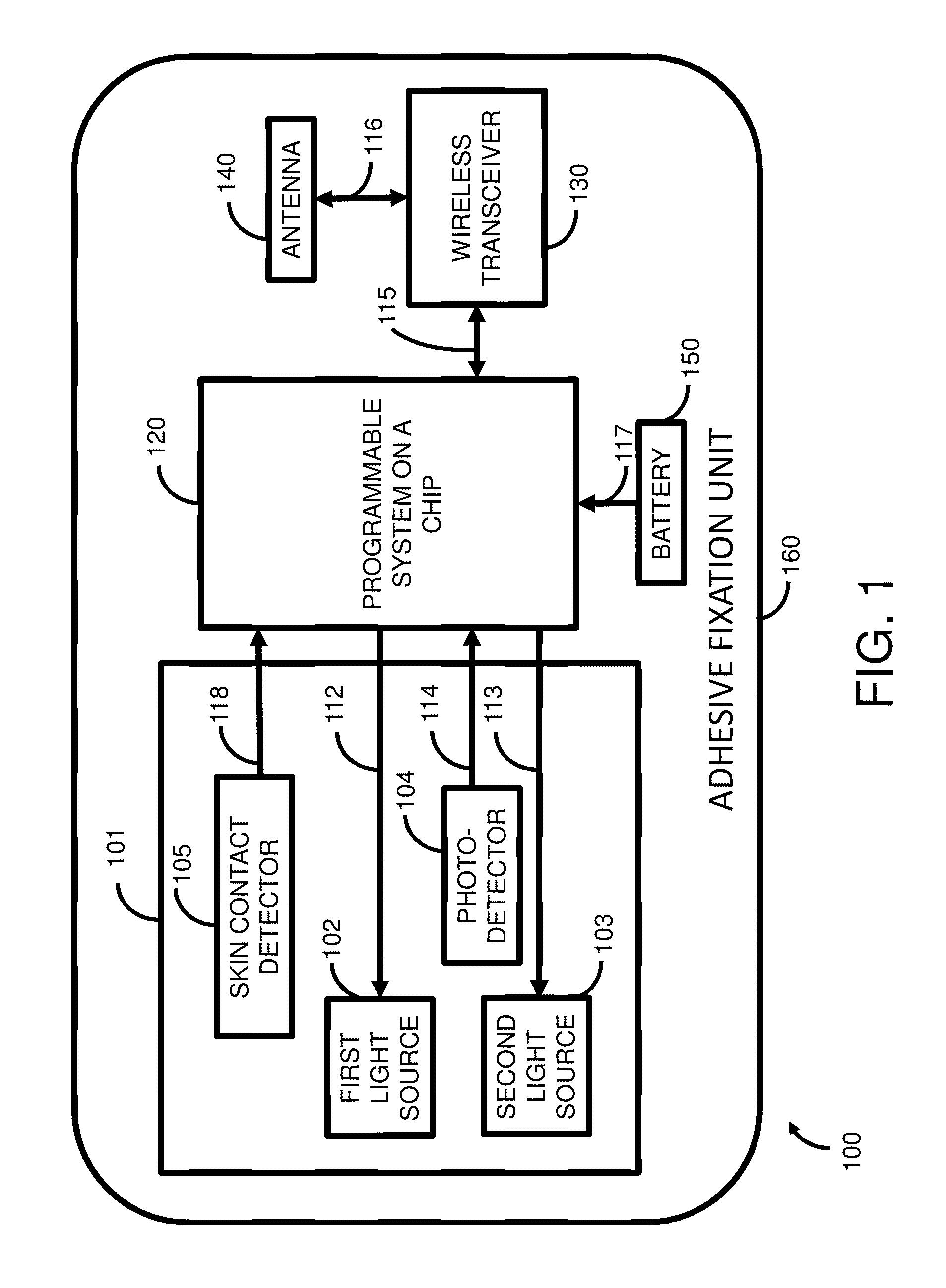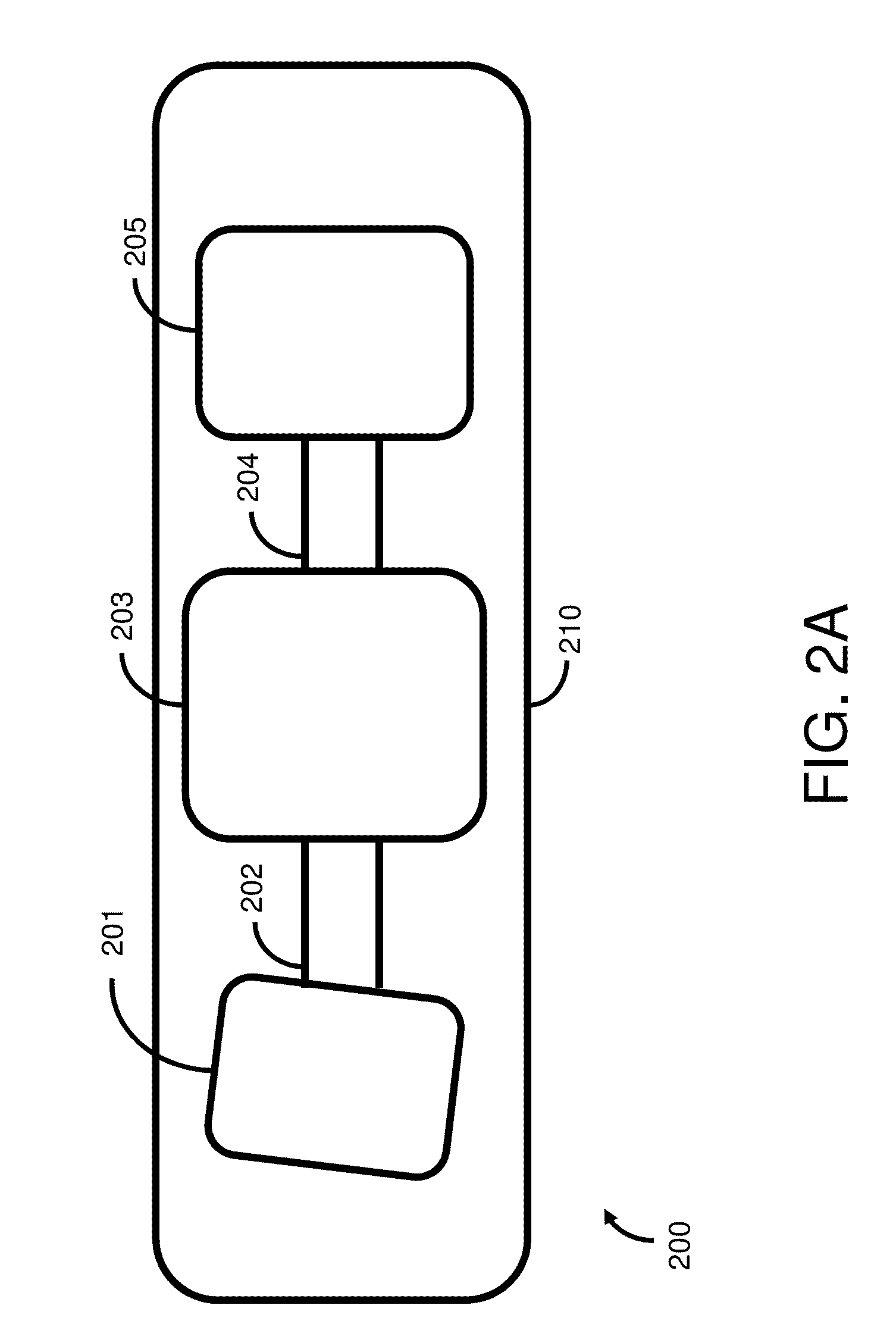Wireless disposable shock trauma monitoring device
a technology of shock trauma and monitoring device, which is applied in the field of optical systems, can solve the problems of limited utility, bulky equipment, interfering substances in a medium, etc., and achieve the effects of convenient use, small size, and easy wear and us
- Summary
- Abstract
- Description
- Claims
- Application Information
AI Technical Summary
Benefits of technology
Problems solved by technology
Method used
Image
Examples
Embodiment Construction
[0041]The present invention relates to a miniature wireless disposable optical tissue oximeter to monitor oxygen levels in tissue for use in shock trauma and exercise training applications. The oximeter measures local tissue oxygen saturation (StO2) using near-infrared spectroscopy. The measurement is non-invasive, immediate and continuous.
[0042]FIG. 1 is a block diagram representation of a wireless disposable shock trauma monitoring system 100 in accordance with an embodiment of the present invention consisting of sensor 101 which contains a first light source 102, a second light source 103, and photodetector 104. The first light source 102 emits a first beam of light in the near infrared region into the tissue, and the second light source 103 emits a second beam of light in the visible red region into the tissue. By way of example, the first light source may emit at a wavelength of 905 nm and the second light source may emit at a wavelength of 660 nm. It should be appreciated, how...
PUM
 Login to View More
Login to View More Abstract
Description
Claims
Application Information
 Login to View More
Login to View More - R&D
- Intellectual Property
- Life Sciences
- Materials
- Tech Scout
- Unparalleled Data Quality
- Higher Quality Content
- 60% Fewer Hallucinations
Browse by: Latest US Patents, China's latest patents, Technical Efficacy Thesaurus, Application Domain, Technology Topic, Popular Technical Reports.
© 2025 PatSnap. All rights reserved.Legal|Privacy policy|Modern Slavery Act Transparency Statement|Sitemap|About US| Contact US: help@patsnap.com



